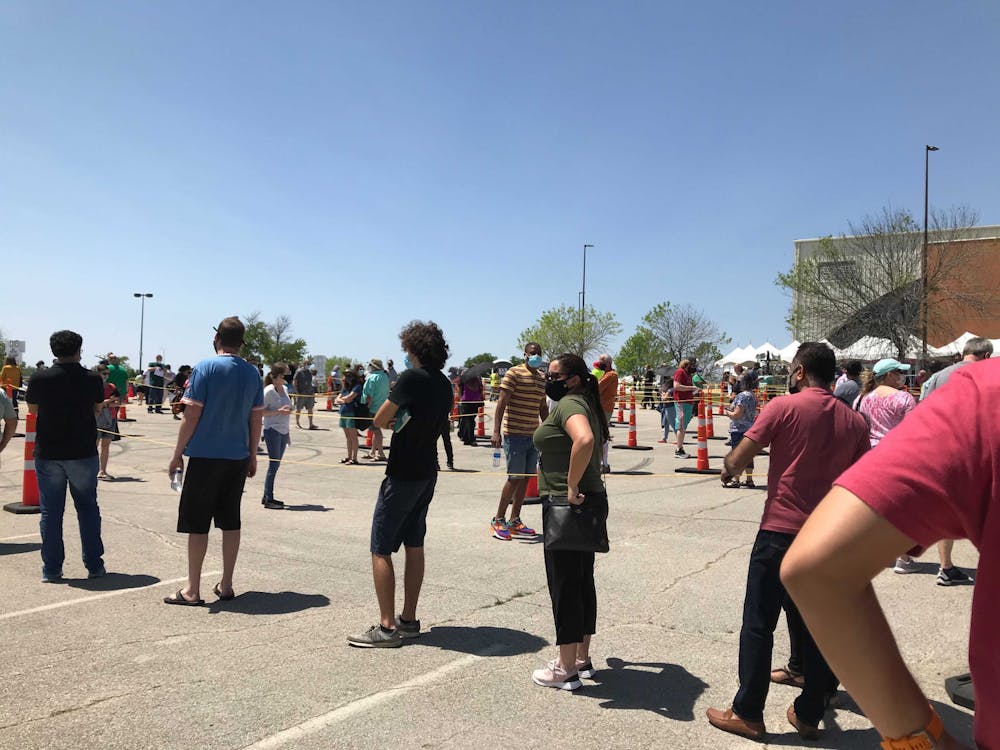The School of Nursing (SON) held an event titled “COVID Vaccine Equity: Reaching Underserved Communities Locally and Globally” on April 7. The discussion was co-moderated by Angie Chang, manager of the Center for Global Initiatives (CGI), and CGI Director Nancy Reynolds, also co-director of the Collaborating Centre for Nursing Information and Knowledge Management at the World Health Organization (WHO).
“This event was held in response to WHO’s Call to Action for #VaccinEquity in the first 100 days of 2021,” Chang wrote in an email to The News-Letter.
Chang and Reynolds hoped to increase awareness of and engagement with vaccine distribution and administration. The panelists included SON Associate Professors Rita D’Aoust and Michelle Patch, along with SON PhD students Carissa Lawrence and Alvine Akumbom.
“The panelists were chosen for their expertise and roles,” Chang wrote. “Vaccine distribution and administration is a hot topic everywhere, but we wanted to share the academic perspective by our faculty and students.”
Akumbom began the discussion by emphasizing the progress of vaccine distribution in the U.S. so far. As of April 14, more than 75 million people have been fully vaccinated.
However, Akumbom believes there is room for improvement. Although equitable distribution of vaccines has been a major goal, Akumbom noted that the statistics paint a different story. According to the Centers for Disease Control and Prevention, in the first month of vaccine distribution, 60.4% recipients were non-Hispanic whites, though marginalized racial groups have been disproportionately impacted by the pandemic.
Combatting disparities in access and uptake in vaccines, Akumbom said, requires interdisciplinary efforts.
One reason for limited access to vaccines is the method of administration. Although Patch noted that mass vaccination sites are a great resource, she and D’Aoust explained that not all populations can utilize them. Such sites require individuals to have reliable internet access to make an appointment. People with disabilities or those lacking transportation may not be able to go to the site. Additionally, people concerned about their immigration status might be afraid to sign up.
“You may be eligible, but being able to have that vaccine is a different story,” D’Aoust said.
In partnership with Jason Farley of SON, Patch has prioritized bringing vaccines directly to communities facing inequities. Such communities include independent living facilities for seniors, those experiencing housing instability and those who suffer from substance use disorders.
“It’s about really getting on the ground and going to folks,” Patch said.
Due to disparities in the populations that have been vaccinated, Lawrence stressed that the potential use of vaccine passports by some businesses would be inequitable at this time.
“You are creating additional structural disparities for a group who is already dealing with these incredible limitations,” Patch said. “We need to be really thoughtful and slow to adopt [vaccine passports].”
Akumbom highlighted the global implications of vaccine passports, which she said would penalize countries that lack equitable access to vaccines.
“If countries are guaranteed equitable access to vaccines, then we probably may not even need a vaccine passport,” she said.
Akumbom pointed to COVAX as a useful tool in maintaining the integrity of global vaccine distribution and manufacturing.
“What we see in mistrust in vaccine confusion or hesitancy from a lot of lower-income countries is based on the fact that they don’t think the quality of the vaccines they’re getting is the same as the quality of the vaccines that are being distributed in high-income countries,” she said.
As vaccine distribution continues, D’Aoust stressed the importance of international collaboration.
“We are one world,” she said. “If we really want to get ahead of this pandemic, then those who are at most risk regardless of where they are need to be able to have that vaccine, and we all need to pitch in.”
The panelists called for more investment in public health nursing and population health, instead of focusing on the hospital-based nursing professions that have become more central in recent years.
Akumbom explained how nurses integrated into communities can serve as sources of public health information and knowledge by performing home visits, staffing community centers and building long-term relationships with community members. With the vast misinformation and confusion that have surrounded public health messaging regarding COVID-19, Akumbom believes that these practices would be an invaluable tool in the future.
Yet one of the biggest lessons from the pandemic, Patch said, is that health inequities and structural racism exist in the United States.
“It’s not simply about getting shots in arms,” she said. “It really is about revolutionizing the way that we approach care and, at the most fundamental levels, in how we’re structuring things in a way that is truly fair for all.”





